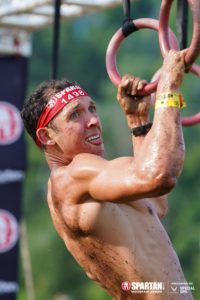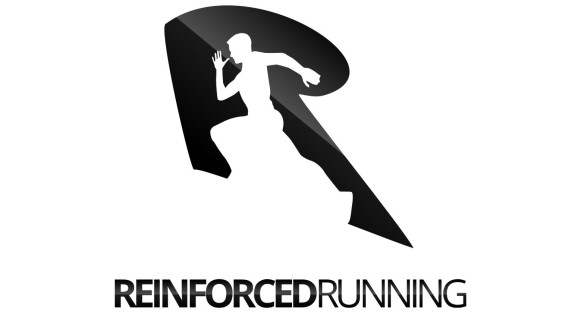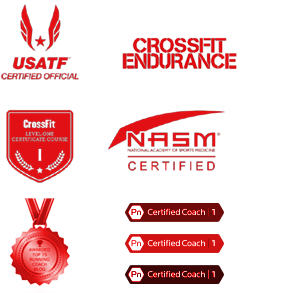A comprehensive guide to creating your own Spartan Race training plan.
A Spartan race training plan will help you get the most out of your time and energy. The sport has so many elements that it is hard to know where to spend your time and effort to get the best results. This is the first part of 3 parts that will help you understand how each element can impact your training and what you should do to get results.
Spartan Race training plans are not created equal. This guide will help you create a Spartan Race training plan that will work for you.
When I started my first Spartan Race Training program, I was a cocky runner. Like every endurance athlete who has worked in the past of some level of success, it is believed that obstacle course racing is just a race for people who are not fast.
Every year, high-level runners enter the sport hoping for an easy podium finish. They want a chance to win races again – I was one of these athletes.
Runners soon find out that a Spartan Race is unlike anything they have done in the past.
The sport of obstacle course racing (OCR) has unique demands that no other sport requires. So training for your next race to improve your performance is not as straight forward.
Over the last 5 years of training, I have found personal success that has led me to the Spartan pro team. I have also coached age group podium finishes, elite athletes, and other spartan pro teamers. I have been able to establish a few principles that I believe every OCR athlete needs.
Running is important – sports specific running is crucial.
I am not breaking ground, saying running is the most critical piece of training for OCR. Most of the events take place between the obstacles. Yes, you need to be able to complete the obstacles, but overall the best runners will have the best shot. But to really do well in OCR, you need to have specific running down to make big gains.
Train on specific terrain
If you are not coming from a trail running or mountain running background, then the terrain will be your number one obstacle.

Coach Rich Ryan @ Palmerton 2019
Running on trails is a trainable skill where you need to wire your muscle patterns and train vision to help make fast decisions on where to go and where to step during each piece of the trail run. People lose ground by being indecisive and overly cautious.
The same way Steph Curry will catch and shoot without thinking is how you want to be able to hit rocks and roots. It will take time, and you will need to practice. Getting on technical trails one to two times per week will help you develop the skill required to run well on trails.
Speedwork on trails
Don’t overcomplicate your trail speed work. You won’t have the associated pacing to rely on since all trails are different and much slower than the road. Work at your rate of perceived exertion or dial in your heart rate to make the most of your trail speed sessions.
Stick with shorter intervals or fartlek efforts on trails to make it simple. Here are a few easy examples
- 8 x 1 min @ race pace with one-minute recovery
- 3 rounds 1-2-3 pickups with equal rest. Spartan Race Training Plan
Long tempo efforts are the other kind of trail speed work that will be most helpful.
Spending a lot of time running on trails at a sustained effort will expose your weaknesses and strengths.
During your tempo run, I suggest you work on heart rate to monitor your effort. You will see where your HR dips and surges based on the terrain. If your heart rate dips below the desired range during tight turns or downhills, it means you are putting on the brakes too much and have more skill to develop to reach your potential.
If your HR jumps when going up hills or running in open spaces, you have some work to do on flat speed running or hill work.
Tempo example
20 – 60 mins @ 75-80% of max heart rate
Don’t be afraid to do other races that are not Spartan Races. There are tons of local trail races that are small and laid back. You can use these cheap races as practice for pushing yourself on only trails.
Have your trail sessions as a staple in your training constant throughout the year. I’d recommend doing some kind of terrain specific work every other week to maintain your skill.
You will race on hills – so train on hills.
Training on hills should be the foundation for much of your speed work during spartan race training. If you have ever done a spartan race outside of Florida you know that they like to set the venue at a place that has laughably steep climbs and descents.
Running uphill requires more muscle fibers recruitment. Consider it the same as strength training for building strength in your glutes and high hamstrings. It will also help you create sport-specific endurance by running hills regularly.
The caveat with hill running is that you will fatigue quicker. Your muscles will strain more, and your heart rate will jump through the roof. The early onset fatigue makes it difficult to match the volume you can handle on flats.
For this reason, keep your hill training simple in the early stage of adding in speed work. As you start to slowly add hill intervals to your training plan and make sure you are recovering by running easy miles on flats in the days that follow
Fast on flat does not equal fast on hills (not always).
The change in terrain has been proven to level the field between traditional runners and other endurance athletes.
A study conducted showed that middle-distance runners with better high-end speed, blood lactate tolerance, and anaerobic conditioning did not fare any better on an incline treadmill test than triathletes cross-country skiers who had a similar VO2max.
https://onlinelibrary.wiley.com/doi/abs/10.1034/j.1600-0838.2000.010005286.x?sid=nlm%3Apubmed
We all want to get faster – but it turns out aerobic strength would is a better indicator of your hill performance than being able to run a fast 5k. Spartan Race Training Plan
So if you don’t have hills at your disposal, add milage or more aerobic volume from biking, swimming, skiing, and rowing.
Here is a Reinforced Running Podcast episode on how to train in the mountains.
Spend time running downhill.
Going downhill is essentially a skill – but the impact forces added to your body from downhill training can be detrimental. A study showed that the impact forces of running downhill increase your landing force by 75%.
So you can see how too much downhill running can lead to breakdown or injury. Spartan Race Training Plan
Spending time going down and going down fast should be specifically trained in small bursts until you have built enough volume to sustain longer efforts.
Train your downhill volume during your training runs over hilly terrain. Train for speed with structured downhill efforts where you can focus on running hard. Something as simple as 8 x 60 seconds down as fast as possible and easy going back up.
Consider running 4-6 downhills challenging for 30-45 seconds. These won’t feel great and will be a bit uncountable, but it will help you get used to running fast and create small doses of the impact force so that you don’t get beat down too quickly.
Keep a small dose of downhills present in your training through your program. It does not have to be it’s own workout and can fit into a regular run or in the middle of a longer run.
Listen as Johnny Luna Lima Explains how he has trained himself into the best downhill runner in the sport.
But also, run on flats.
As mentioned above in the hill section, even though you will be running most of your events on hills and trails, you should not ignore flat running. Spartan Race Training Plan
If you don’t have hills, then bump your volume to help improve your aerobic strength – spend time doing longer tempos and increasing your weekly mileage to sustain a pace throughout a long period.
If you are running short, fast bursts to improve your climbing on flat ground, you will see some improvement but building aerobic, not anaerobic, strength will move the needle more for you on the hills and course for anything over a sprint.
Anaerobic strength and lactic tolerance will play a role in Spartan race training and race day – but only race-specific. Spartan Race Training Plan
If you are training for stadions, dekafit, or a local sprint, you will want to have some lactic tolerance. You can build more lactic tolerance on flatter runs because you will not be limited by the terrain or your muscles’ potential to fatigue before you can get the most of the lactic takeover.
Flat runs will help you maximize your biology as a runner. You will be able to do more and run faster to elicit the desired response. So if your overall endurance is lacking, you should spend more time on the flats so you can run faster for a more extended amount of time.
Learn more and Apply for One on one Coaching Here
Use “compromised running” to get race ready
The term has compromised running was coined by the godfather of OCR training Brakken Kracker (check out the running public podcast to get more Brakken).
Compromised running means running, then doing other stuff and running again. It’s a great way to simulate the feeling that may present itself on race day.
Compromised running is a lethal tool for the beginning OCR athlete, an OCR athlete coming from endurance, and to get race sharp.
Newer athletes need to familiarize themselves with the feeling of full-body exhaustion and then running at a high pace. Runners can often find themselves in a rhythm. Rhythm running is the anti-OCR and needs to leave the system. Spartan Race Training Plan
OCR is about having no rhythm and still being able to run fast. In any OCR, your running pace will rarely matters, so traditional road race paces won’t help.
Any athlete can use compromised running to help them get sharp for race day. An experienced OCR athlete will not need a huge training block of compromised running. But keeping a dose of broken running will remind you what it feels like on race day.
A classic example (again from Brakken through Hobie Call) is the Hobie Tempo: Spartan Race Training Plan
5 mins @ HM pace
12 walking lunges each leg
12 burpees
12 walking lunges each leg
- The total duration can be 20-40 minutes.
Make sure you can get back to running as fast as possible. If you are taking rest during the 12 burpees or walking lunges, then scale back the movement so you can complete them all and get back to running. Spartan Race Training Plan
A bad example of compromised running that I see all the time is something like below:
1-mile run
20 burpees
20 thrusters
20 push-ups
20 sit-ups
20 air squats
– rest 1 min and repeat
The above spends too much time between running bouts. You will rarely find yourself in a race situation where you will have more than a minute of movements-running (I’m counting carries as running)
The thing to remember is that you are not committing to a short term plan. You will spend months and years dedicated to training if you want to make the most out of your OCR season and training.
Here is a video of a workout I like to use for myself and the athletes I coach.
Building a fatigue-resistant finish
Build fatigue in your system day over day and week over week is how you can train to run fast with tired legs (like at the end of a long race).
Select workouts help you run while feeling discomfort, an elevated heart rate, or low energy levels.
The easiest way to do this is by adding in intervals late into your run or finishing at an uptempo pace.
Incorporate “cutdown miles” or “progression miles” at the end of a long run or extend your warm-up before going into my interval work.
These workouts are perfect for the beast or ultra-distance and even some supers.
Reducing your recovery time between runs will also help you train your tired legs. Adding the frequency (covered in the next section) of running to your week is an easy way to keep fatigued elevated.
Also, consider adding running doubles to your training if you have maxed out your single bout efforts. Doubles should typically be comfortable running.
Volume rules all
You need to run fast to get good at OCR, and you can’t get good at running by running 3 or 4 days a week. You can get better, but you won’t be good.
The first place that you start to add volume is by adding frequency. Simply put, you need to run more often.
The more often you run, the less recovery you will achieve. Recovery is important, but as you train, you need to accumulate fatigue as you improve your fitness. This is the general principle of progressive overload.
If you “over-recover,” you won’t force your body to adapt to the stimulus you are presenting. Running a more easy mile will give you the fatigue needed to continue overloading your body without risking injury.
The key is easy volume. More intensity will tax your body and nervous system and put you at risk of injury or plateau.
When you add more running, you will also increase your ability to handle more intensity. You will improve your cardiovascular strength and running efficiency, so when it’s time for fast intervals, you will have the ability to do more sets and rep.
More intervals at a fast pace lead to big results.
A common mistake I see is doing long epic workouts without a substantial base of volume. These big workouts are fun, but you won’t recover well or keep the intensity high enough without significant volume.
I recommend running 5-7 days per week, depending on your starting point.
If you are plagued by running injuries when your volume goes up, you should start to work toward better running form. Here is a free ebook to help you get started.
**Adding volume while keeping intensity is a balancing act. If you go too far in one direction you will risk overtraining. Check out this video to learn how to avoid overtraining**
Learn More About Personal OCR Coaching with Reinforced Running Here
Carry strength will save you the most time on the course.
Outside of running, carries will be where you spend the most time during a Spartan Race. A carry can make or break your placement in a race, so you need to move well through these workouts.
The best way to get better at your carry is to carry heavy things. Seems simple enough.
However, the problem with heavy carry is it will wear your body and hurt your ability to recover.
It’s not always wise to do a super long carry during your workout. Yes, it will help with your mental ability to suck it up and lean into the pain, but we want to get better at carrying things fast.
You can use the gym to get strong at carries. Add specific movements that will target your core, lower back, and arms. Many carry specific strong man movements that will help with your ability to pick up and move things through space.
Use strong man and odd object training.
- Front Loaded Sandbag Carry
- Front Loaded Sandbag squats
- Farmers Walk
- Front Rack Walk
- Mixed Grip Suitcase walk
- Yoke Carry
- Overhead Carry
- Zercher Carry
**The breath training from above will give you a big edge on your competitors during a carry.**
Here is an example of my favorite carry workout.
Another way to help your carry strength is to improve your relative strength using loaded compound movements.
Compound movements to improve relative strength
To get stronger there are a few movements to help your relative strength. In a Spartan Race, the weight is not that heavy, and almost everyone can pick it up and move with it – but the lighter we can make it feel, the faster you will be able to go.
The bottom line is getting strong matters.
Compound movements will give you the most bang for your buck when it comes to power production and relative strength.
When working on your maximum power and strength production, you want to lift as heavy as possible with good form and keep the reps under 5.
Deadlifts – 4 x 2 @ 88% max
Back squats 3 x 3 @ 85%
Overhead strict press 5 x 2 @ 90%
If you want to get strong, you should put these workouts in the early stages of your gym strength sessions so you will be the least amount fatigued.
Once you are approaching a race you can test out a few workouts to help you move weight under fatigue.
Carry Workout Examples
Ex. 1)
5 Rounds
15 Burpees over DB
60 second Farmers walk
- rest 60 seconds
Ex. 2)
4 Rounds
1-minute Farmers Walk
1-minute Burpees
1-minute Front Rack Carry
1-minute Jump Squats
These workouts will help you learn how to move through transitions, which is a massive part of your strength training protocol. Pick up that odd object and start moving with it.
Seamlessly add strength work into your training schedule with our Power and Conditioning for the OCR athlete for just $19 a month.
Grip strength for obvious reasons.
Grip strength is a massive limiter to many OCR athletes. If you don’t have the required strength to get through the monkey bars or twister, you need to do grip work.
A common mistake I see is athletes doing dead-hangs for as long as possible. In practicality, your dead hang does very little for your grip during a race.
Grip training should be approached as absolute strength training, not an endurance endeavor.
Absolute strength is the maximum amount of force an athlete can express.
Creating a higher level of force will give you strength reserves as you move through the obstacles with less effort. To build absolute grip strength, you need to work at high intensity with low volume — the opposite of dead hangs.
You can add intensity in two ways. Adding weight or reducing ledge size (think of a hang board)
Get some ideas here (hang board article)
Below are some proven grip training methods to follow.
Absolute Grip Strength Training
MaxHangs protocol
Pick a weight or a lege that will be very difficult for 13-15 seconds.
Hang with weight for 10 seconds – just below failure.
Rest for 3 minutes
Repeat 3-5 times
Repeat the above twice per week with at least 2 days of rest between sessions. Progress this protocol by
Here is a study from one of climbing’s top researchers showing evidence behind this method.
Once you have worked on absolute power for several weeks, you can replace your training with some power endurance with the 7/3 repeaters.
Power Endurance Training
7/3 repeater
Pick a moderate to lightweight or a moderately hard ledge and complete the following:
6 Rounds
7-second hang
3-second rest
Each set should take 1 minute.
Rest 2-3 minutes and repeat for 2-4 sets.
Grip “endurance” does not need to be worked as much because power endurance will help you overcome multiple grip obstacles in succession.
Always Get Specific
Once you get close to an event, it will help you try to get on some obstacles to help with the movement practice.
You will often find success in these obstacles by practicing movements and spending time on the course during and after the races. Ensure you take the time to create an appropriate strategy for when you enter a grip related obstacle.
Learn More About Personal OCR Coaching with Reinforced Running Here
Learn more about our strength coaching program for the OCR athlete for just $19 a month.
Spartan Race Training Plan

